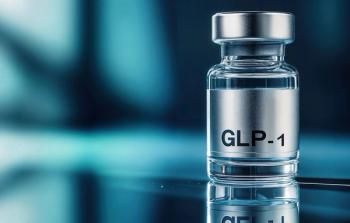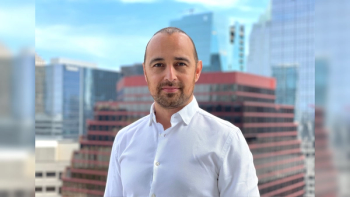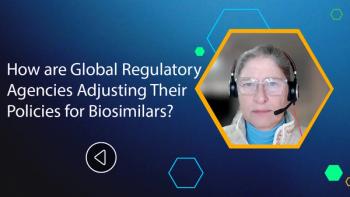Topline Findings
- Fast Track Designation: The FDA has granted Fast Track status to Sanofi’s SAR402663, accelerating the development of a one-time gene therapy for neovascular age-related macular degeneration.
- Innovative Gene Therapy: SAR402663 delivers soluble FLT01 to inhibit vascular endothelial growth factor, aiming to slow vision loss, reduce abnormal blood vessel growth, and minimize the need for frequent intravitreal injections.
- Expanding Ophthalmology Pipeline: This milestone follows Sanofi’s previous Fast Track designation for SAR446597, highlighting the company’s pipeline of novel treatments for advanced retinal diseases.
The FDA has granted Fast Track Designation to Sanofi’s SAR402663, an investigational one-time intravitreal gene therapy for neovascular age-related macular degeneration (AMD). The action could accelerate development of a treatment that reduces vision loss and the need for frequent injections.SAR402663 is designed to deliver a vascular endothelial growth factor (VEGF) inhibitor directly to the eye, with the goal of slowing disease progression, reducing treatment burden, and preserving vision for patients living with wet AMD. The therapy is currently being evaluated in a Phase I/II clinical trial (NCT06660667).1
How is Sanofi Advancing its Gene Therapy Pipeline for AMD?
Trial Design and Objectives
- The dose escalation, dose expansion trial is currently evaluating the safety, tolerability, and efficacy of SAR402663 in approximately 66 patients with AMD.
- The trial will be conducted in two stages, with the first stage evaluating different dose levels of SAR402663 across successive participant groups to assess escalating doses.
- In the second stage, participants will be randomly assigned to one of two dose levels chosen from the initial findings, with both participants and investigators blinded to which dose is given.
- After a single administration of SAR402663, participants will be monitored with scheduled evaluations for 12 months, after which they will transition into a long-term follow-up phase lasting up to five years to track safety and the persistence of treatment effects.
- Primary endpoints of the trial include incidence and severity of ocular treatment-emergent adverse event (TEAEs), incidence and severity of non-ocular TEAEs, incidence and severity of ocular treatment-emergent serious adverse event (TESAEs), incidence and severity of non-ocular TESAEs, the number of participants with any clinically significant changes in laboratory variables, and the number of participants with any clinically significant changes in vital signs.
- Key secondary endpoints include the percentage of patients not requiring supplemental anti-VEGF therapy, annualized injection rates of anti-VEGF therapy, change from baseline in central subfield thickness, and change from baseline in best corrected visual acuity.2
Context in Sanofi’s Ophthalmology Pipeline
The recognition marks the latest milestone in Sanofi’s growing ophthalmology pipeline, coming on the heels of another recent FDA Fast Track designation for the company. In July, the FDA also granted Fast Track Designation to SAR446597, an additional one-time intravitreal gene therapy for the treatment of geographic atrophy due to AMD.3
- According to Sanofi, AMD affects approximately 200 million people globally.
- Neovascular AMD affects more than one million people in the United States and approximately six million people globally.1
- According to the Centers for Disease Control and Prevention, approximately 12.6% of people in the United States aged 40 years and older were living with AMD in 2019, 0.94% of whom were also living with vision threatening.
- It was also found that the prevalence of AMD increases with age, affecting around 2% of people between 40 and 44 years of age (95% Uncertainty Interval [UI]: 1.3–2.9%) and reaching approximately 46.6% (95% UI: 28.4–72.4%) in those aged 85 years and older.
- When adjusted for age and sex, the prevalence of AMD was lower among non-Hispanic Black individuals (7%, 95% UI: 5.2–9.1%) compared with other racial and ethnic groups (13.3%, 95% UI: 10.2–17.1%).
- Across the United States, the unadjusted prevalence of AMD varied, with the lowest rate observed in Washington, DC, at 6.2% and the highest in Florida at 18.3%.4
Sanofi’s Perspective
Sanofi believes SAR402663, which delivers genetic instructions for soluble FLT01 to block abnormal blood vessel growth and protect the retina, could transform the treatment of neovascular AMD. By potentially eliminating the need for frequent injections, the company sees the therapy as a way to offer patients a more durable and convenient option for preserving vision.1
References
- Press Release: Sanofi’s SAR402663 earns fast track designation in the US for neovascular age-related macular degeneration. Sanofi. September 11, 2025. Accessed September 11, 2025. https://www.sanofi.com/en/media-room/press-releases/2025/2025-09-11-05-00-00-3148313
- A Safety and Efficacy Study of One-time SAR402663 in Adults With Neovascular Age-related Macular Degeneration. Clinicaltrials.gov. Accessed September 11, 2025. https://clinicaltrials.gov/study/NCT06660667?term=SAR402663&rank=1
- Press Release: Sanofi’s SAR446597 earns fast track designation in the US for geographic atrophy due to age-related macular degeneration. Sanofi. July 16, 2025. Accessed September 11, 2025. https://www.sanofi.com/en/media-room/press-releases/2025/2025-07-16-05-00-00-3116124?utm_source=chatgpt.com
- VEHSS Modeled Estimates: Age-Related Macular Degeneration (AMD). CDC. Accessed September 11, 2025. https://www.cdc.gov/vision-health-data/prevalence-estimates/amd-prevalence.html






